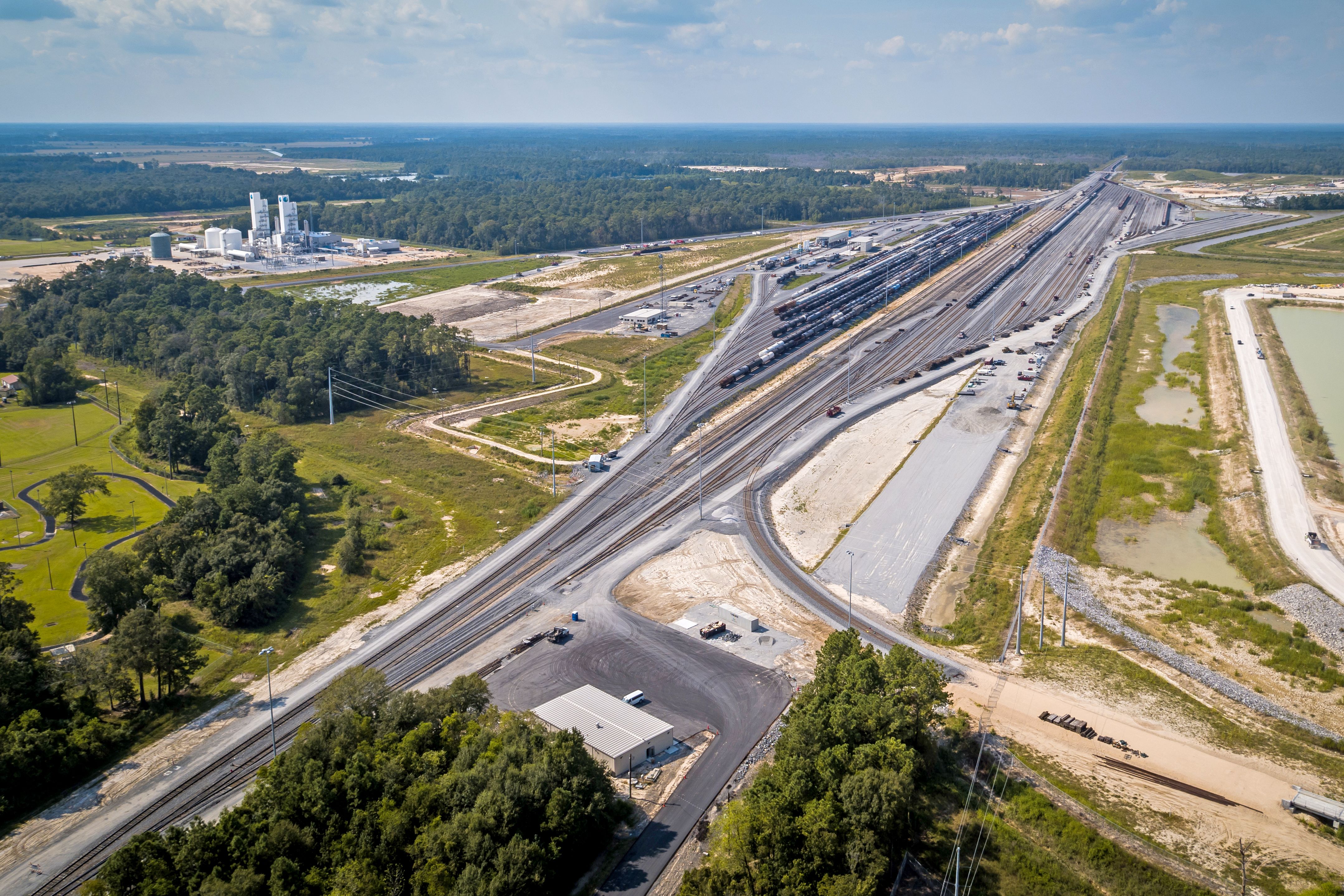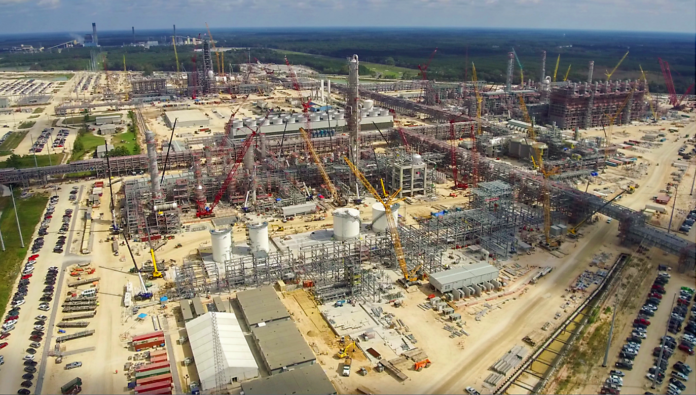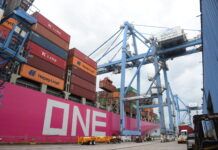Operating in a global economy involves partnerships within and across industries. This is evident with a number of large-scale, complex projects taking place across Louisiana and along the Gulf Coast. One recent example of such collaboration is the logistics services agreement developed between Houston-based energy and chemical company Sasol Chemicals (USA) LLC (a subsidiary of South Africa-based Sasol Ltd.) and Kansas City Southern Railway Company (KCS) at Sasol’s megaproject site near Lake Charles. How do such agreements come about? What steps are involved in negotiating the complexities and guiding the project to success? And how can the lessons learned be applied to other megaprojects?
ABOUT THE PROJECT
KCSR, a subsidiary of KCS, reached an agreement with Sasol in June 2015 for the construction and long-term lease of a storage-in-transit (SIT) rail yard. The rail yard will support Sasol’s new $11 billion ethane cracker and derivatives project near Westlake. Additionally, KCS will replace and expand its rail-car classification yard in nearby Mossville.
In October 2014, Sasol announced an investment of $8.1 billion on the Louisiana ethane cracker and derivatives complex, which will include six chemical manufacturing plants. The ethane cracker is designed to produce 1.5 million tons of ethylene annually, benefiting from significant economies of scale. Sasol will invest an additional $800 million in infrastructure, utility improvements and land acquisition. The project is more than 65% complete, with operations scheduled to start in 2018.
The agreement with KCS will help Sasol develop its location near Lakes Charles as an integrated, multi-asset site that will foster growth for decades to come. “For Sasol, the agreement secures logistics services related to the import of feedstocks and export of products to customers—a critical component of our business,” says Kim Cusimano, manager of corporate affairs for Sasol’s North American operations.
The agreement benefits KCS by positioning the railway company to increase its ability to serve the growing petrochemical industry, as well as other customers, in the region, says C. Doniele Carlson, assistant vice president for corporate communications & community affairs with KCS. Chemicals and petroleum commodities make up one of KCS’s most lucrative business sectors. In KCS’s 2015 Sustainability Report, the company reported revenue of $474.2 million from 259,700 carloads of chemicals and petroleum.
Sasol and KCS were well-acquainted before coming to an agreement on the rail yard project. For decades, KCS has safely and reliably delivered Sasol’s products to the company’s customers, KCS says. The agreement extends the relationship between the two companies both in time and in operations, as Sasol will increase the number and volume of products manufactured at its Lake Charles site.
LESSONS LEARNED

Remaining open and flexible as negotiations on megaprojects evolve is essential for reaching an agreement that will prove sustainable for years to come, Carlson says.
“The most important lesson learned is that big investments require a lot of work and flexibility,” Carlson says. “It is important that projects of this size are done correctly to ensure long-term operational success.”
This includes identifying the appropriate people and expertise to be involved in negotiations and deal-making. At Sasol, senior commercial, logistics and project management personnel led the effort.
Further, achieving success hinges on a strong commitment from all parties involved throughout the duration of the negotiation period, particularly if negotiations are protracted.
“Sasol and KCS finalized the agreement in June 2015 after months of discussions between both parties,” Cusimano says. Adds Carlson: “Over time, the project has evolved and our relationship has evolved.”
Such commitment is essential because the success of critical vendor/owner agreements often comes down to the details, which can be incredibly complex and technical, even beyond legal and financial issues. In this case, Sasol and KCS had to cover a range of issues.
“This was a very complicated agreement, which included leasing property, storage in transit, switching services with other railroads, as well as business with Kansas City Southern,” Carlson says.
Cusimano echoes this. “The extensive agreement included several negotiation points, including property considerations, such as KCS needed to lease Sasol-owned property for the storage-in-transit rail yard, yard design and capacity, construction specifications, maintenance requirements and warranties,” she says. “The two entities also needed to coordinate construction activities, as KCS and Sasol planned to construct their respective expansion projects in parallel, sometimes in the same location.”
Vendor-owner arrangements such as the Sasol/KCS storage-in-transit rail yard project don’t take place in a vacuum. As such, it is critical that all stakeholders be brought into the planning phase as early as possible.
Cusimano notes that external stakeholders, including the Calcasieu Parish Police Jury, the planning and zoning board, local residents, and industrial neighbors also participated in the planning process once Sasol and KCS had reached an agreement on terms.
For example, Cusimano says, “The KCS railyard expansion included construction of an overpass over a state highway in order to mitigate traffic impacts as a result of additional crossings to intersect the public roadway. This one aspect of the KCS expansion required a significant amount of coordination with local authorities and near neighbors.”
“The end result is a mutually beneficial local infrastructure improvement project yielding less traffic for local residents and commuters and flexibility for Sasol/KCS logistics teams—one example of a positive ripple effect of the Sasol-KCS collaboration,” she adds.
AN ONGOING PARTNERSHIP
The work involved in negotiating a megaproject doesn’t end when a deal is signed. Indeed, the relationship between the parties continues to need attention throughout the life of the agreement, a reality that both Sasol and KCS acknowledge.
“Both parties are very excited for the years of partnership ahead,” says Carlson.
Adds Cusimano: “There are a lot of moving parts with projects the size of Sasol’s ethane cracker and derivatives project, where hundreds of commercial agreements such as the KCS-Sasol agreement must be negotiated and executed. Excellent project management and stakeholder focus must be maintained throughout, while also remaining flexible to changing dynamics over multiyear projects like this one. The KCS and Sasol teams remain in regular communication and will continue to do so.”
This article was originally published in the fourth quarter 2017 edition of 10/12 Industry Report.









